Little Whiskey Bar Has Lots of It
Whiskey, that is. Venerable South Side bar is attached to 1870 mansion.
In 1870 an alderman with the remarkable name of Heliodore J. Hilbert (1829-1914) hired the 29-year old German-born architect Henry C. Koch (1841-1910) to design a 4,500 square foot mansion in the High Victorian Italianate style at 335 Hanover (now 803 S. 3rd.) St., at the southwest corner of National Ave. Two decades later, Koch would design City Hall.
Hilbert had come to America in 1849 armed with an industrial degree from the Royal College of Luxembourg, in his native land, and set forth working on the construction of the Milwaukee and Mississippi Railroad under Byron Kilbourn.
After building other railroads in the Midwest he returned to Milwaukee in 1863. He was elected without opposition to two one-year terms on the Common Council in 1869-1870, serving as council president. In 1889, he returned as City Treasurer, and initiated the search for a site for the city hall that Koch would some day build.
The neighborhood surrounding the building on S. 3rd St. once had aspirations as a select enclave — there was even an Episcopal Church a block to the north. But its proximity to the harbor, the arrival of the railroad to Chicago and giant, polluting factories diminished its appeal for the ruling classes.
The select were soon supplanted by the industrial masses who sought refuge in a new nation, albeit usually without possessing engineering degrees from Royal academies in the old country, as Hilbert did.
There was great growth of commercial activity on the streets of Milwaukee in the Roaring Twenties, and we have seen several instances where old residences like this one took on a new hybrid status as basements and first floors of buildings expanded all the way to the sidewalk to enclose new retail spaces for the booming market.
These spaces would house such small operations as tailors, barbers, laundries, candy stores, cobblers, lunch rooms and “soft drink parlors.”
In 1924, such a structure was appended to the north side of the old Hilbert mansion, at what was then known as 339 National Ave. disfiguring it but little.
In September 1929, permission to operate a “soft drink parlor and lunch room” in the small 517 square foot space was granted to a character with a wonderful name — Bozo Latinovich, a 45-year old native of Yugoslavia.
Latinovich continued operating the establishment during the final years of Prohibition. He watched from his barstool as the Episcopalians shuttered their old church, spiriting away its five bells cast by the Meneely Foundry of West Troy, N.Y. in 1866 (in 2005 reinstalled at the Cathedral Church of All Saints).
On July 31st, 1934, with the Great Experiment ended, Latinovich took out an Application for Permit to Occupy his premises as a “Tavern.”
“What has been the former occupancy of the area or portion of building for which this application is made?” the Bureau of Building and Elevator Inspection asked.
“Tavern,” replied Latinovich, now that the legalized fiction of the “Soft Drink Parlor” was ended.
Bozo continued selling his now-legal booze, and saved his nickels. On May Day, 1940, he went down to City Hall to apply for a permit to “rearrange stair and install new men’s and ladies toilets on first floor” at a cost of $100. This was apparently done by dividing the existing restroom, with the advantage in the men’s favor.
Women used to be exiled to the rooming house’s shared toilets if and when they visited Bozo’s, but now they would have a room of their own right on the tavern floor, in a space measuring three-foot by four-foot, six inches. The toilet rooms remain, quite considerably unaltered to this day. The men’s room is larger by nearly ten square feet. Neither is big enough to include a hand-washing sink. This appliance hangs on the wall outside, to be shared by all who care to undergo that sanitary ritual.
By June 1949, Bozo is gone and Frank Luksic comes on the scene, spending $1,800 to “Erect a new front for tavern. Recessed doorway. Door to swing out.” This modification provided a little vestibule for the place, and probably helped to moderate the temperature within during the cold draughts of winter. By 1950, Mrs. Margaret Luksic ran the tavern, and held on until 1955 when Anton Simons took over the rooming house and tavern operation. In 1960, the place became Ralph Simon’s Bar, then Bush’s Baracuda Tavern in 1965, and Buddy and Delores Tavern in 1970. By that time there was a pool table in the place, which makes you wonder where they put the customers. In 1980, it became, simply, Delores Tavern, as it remained until 1985, when it began a long run as the Woodpecker Lounge.
In 1996 there was an attempt by Alvin Dutcher to run it as Dutch’s Why Not, but in 1999 it was still the Woodpecker. In 2000, Angelo Gagliano gave it a run as Angelo’s Social Club, and in 2001, Frank D’Acquisto called the place Franky D’s.
Outside, during all these years, National Avenue continued to change. By the second decade of the 21st Century, the economic momentum of the neighborhood picked up, and the old area had been rediscovered, especially along S. 1st and S. 2nd streets. Still, things could be lonely, if not dangerous just a block or two to the west.
After a few other stumbles along the way, The Little Whiskey Bar opened under its current management in April 2013.
The reconstruction of S. 5th St. has most likely increased the chances that the portion of W. National Avenue to the east will once again be woven into the neighborhood fabric. Is the timing right, at last, for the little bar in the storefront?
The Tavern Today
Today, the Little Whiskey Bar announces itself with a projecting sign that once advertised Blatz. A Harp Light illuminates the facade from the sidewalk, and a bicycle rack is nearby.
The door is covered by a little canopy, and the plate glass windows are large and present good views of the street. The windows bear illuminated signs from various breweries, and especially, from Jack Daniels.
You enter through the recessed doorway, and are greeted there by Hawkeye, the resident dog. It requires a fast shutter speed to properly capture this friendly hound, since his tail is in perpetual motion.
Late afternoon is a good time to visit bars, especially small ones like this, where seats are liable to fill up during the night time. Plus the crowd will likely be a bit more sedate during the daylight hours. This district is one that can go from drinking with granny and grandpa at 4 p.m. to a considerably younger and more robust crowd after dark.
This is one of those taverns that may be viewed in one glance, but will still reward hours of scrutiny. You can start with the yellow and black-trimmed doors of the side-by-side men’s and women’s rooms, still with the original 1940’s hardware, which itself may have been repurposed from another location. There are televisions hanging from the ceiling, and a fair number of amusement devices.
The bar is on the east wall, and extends six feet into the room, and runs for 21 feet. The back bar features wooden cabinetry that probably dates from the days when Bozo ran his soft drink parlor here.
To the left is a glass-fronted cooler that welcomes us to the Little Whiskey Bar, courtesy of Jack Daniel’s. It is filled with bottled beer, including domestics, imports and micro brews. Atop is a model airplane constructed from Pabst cans.
The Little Whiskey Bar has a lot of whiskey on the bar, and the bottles jostle with each other for space. Regrettably, for this observer, they hide the mirror that is behind. The bartop was laminated some time ago with reproductions of Milwaukee newspapers and old photographs.
“Four Captured After Gun Battle,” reads an old Milwaukee Journal front page from the 1930s, showing photographs of four desperadoes. $15,000 in loot was recovered, the headline reads.
The bar support includes other old photographs, including one of Koch’s City Hall while it was still new. Another view is of the old Pabst Brewery, focused on what is now The Best Place tavern. Also on view is a familiar picture of Edward Steichen and the original bicycle messengers in front of the Western Union office at the Chamber of Commerce Building, circa 1894. A copy of this photo also hangs in the location where it was taken, now the Swingin’ Door Exchange at 225 E. Michigan St.
Otherwise the decor tends toward the stuff that liquor and beer companies pump out to promote their products. None of them are worth as much as even a single one of the many dollar bills that are stapled to the wall above the mirror.
The floor is recently tiled, and there are a number of tables mounted in the limited space at stool height. Once you have had a look around, it is pretty easy to settle into the rhythm of the place. The keen observer will note the dice cup, but might think twice about trying to beat the bartender. Well, maybe we’ll shake just one round when this whiskey starts to wear off. How could you lose?
All here appears quite standard and ordinary for a Milwaukee South Side working class tavern.
Yet there is one distinction that sets this tiny place apart from the others –there is not a single piece of promotional material featuring any of the Milwaukee and Wisconsin professional sports teams to be found in the place. No Brewers, no Bucks, no Packers.
We might say that this would not be the sort of place for a Green Bay football fanatic to reveal his true feelings about the Chicago Bears, or for a Brewers fan to opine on the World Series Champion Chicago Cubs. Proceed at your own risk.
On Tap - Sponsored by Lakefront Brewery
- Angry Orchard Cider
- Blue Moon
- Lakefront Riverwest Stein Beer
- Modelo Especiale
- New Glarus Spotted Cow
- Samuel Adams Cold Snap
- Miller Lite
Photo Gallery
The Verdict
- Name: Little Whiskey Bar
- Location: 309 W. National Ave.
- Neighborhood: Walker’s Point
- Subdivision: Week’s Plot
- Phone Number: -414-795-0513
- Website: None Found
- Facebook: https://www.facebook.com/LWBWALKERspointMke/#
- Twitter: None Found
- Description: A Prohibition-era addition to an alderman’s 1870 mansion has a small footprint, neighborhood vibe, friendly dog.
- Capacity: 49
- Year Established: A tavern since the repeal of Prohibition and a licensed “Soft Drink Parlor” before. Under current ownership since April 2013.
- Year Building Constructed: Original structure 1870; current licensed premise added to portion of W. National Ave. side of original mansion c. 1924-29 [Records differ]
- Estimated Annual Rent: 517 sq. ft. tavern at $51.14/sq. ft. = $26,439.38 per year, according to the City Assessor’s calculations.
- Property is assessed at $61,200 for the 7,650 sq. ft. lot ($8.00/sq. ft.) and $181,800 for the 4,532 sq. ft. building for a total assessed valuation of $243,000. (Note: the per square foot rental cost for the tavern is the highest yet encountered by the Bar Examiner.)
- Property taxes: $5,440.15 Paid In Full
- Property Owner: S2 Real Estate Group 803 South 3RD, LLC. Sam Stair, Registered Agent. Building purchased 08/08/2014 for $200,000
- Business Owner: The Red Arrow Bar, LLC. Luis D. Garcia, agent, DOB 12/20/1978, 100% owner
- Business: Tavern; Alcohol Sales: 100%
- Walk Score: 90 our of 100, Walker’s Paradise. City Average: 61
- Transit Score: 58 out of 100, Good Transit. City Average: 49
- Bike Rack: One right in front of the window.
- Aldermanic District: 12th; Jose Perez
- County Supervisor District: 12th; Peggy A. West
- Police District: 2
Hours of Operation
| Is Open? | Day | Open | Close | Expected Customers | Age Restriction |
|---|---|---|---|---|---|
| True | Sun | 11:00 a.m. | 2:00 a.m. | 20 | |
| True | Mon | 11:00 a.m. | 2:00 a.m. | 20 | |
| True | Tue | 11:00 a.m. | 2:00 a.m. | 20 | |
| True | Wed | 11:00 a.m. | 2:00 a.m. | 20 | |
| True | Thu | 11:00 a.m. | 2:00 a.m. | 20 | |
| True | Fri | 11:00 a.m. | 2:30 a.m. | 50 | |
| True | Sat | 11:00 a.m. | 2:30 a.m. | 50 |
Bar Exam
-
Lakefront Brewery’s New Riverwalk Patio
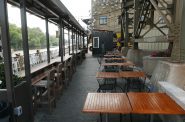 Jul 26th, 2023 by Michael Horne
Jul 26th, 2023 by Michael Horne
-
How Falcon Bowl Was Saved
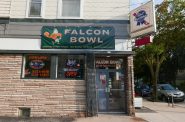 Jul 12th, 2023 by Michael Horne
Jul 12th, 2023 by Michael Horne
-
Clementines Evokes the New Bay View
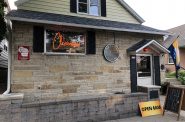 Sep 19th, 2022 by Michael Horne
Sep 19th, 2022 by Michael Horne


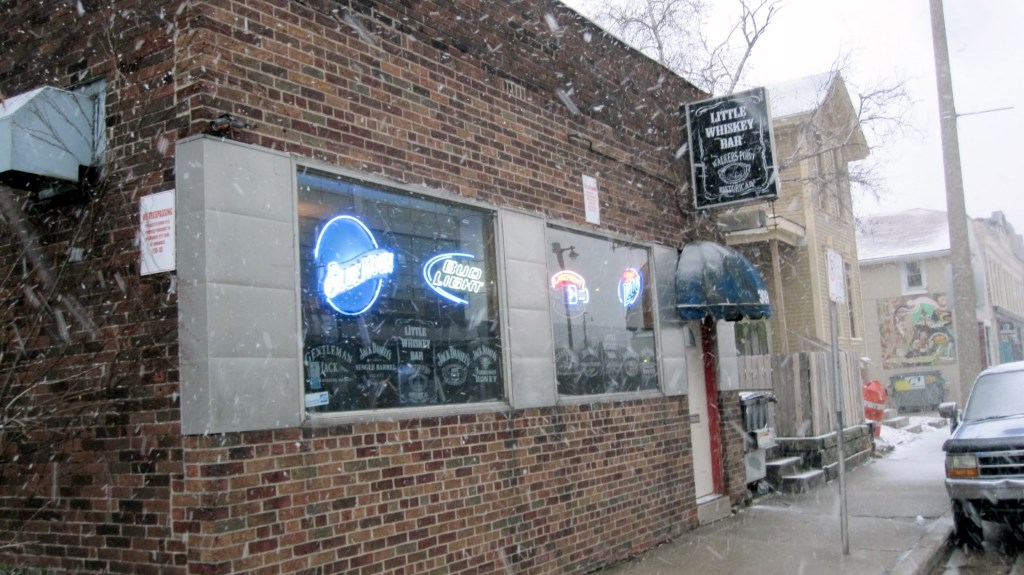
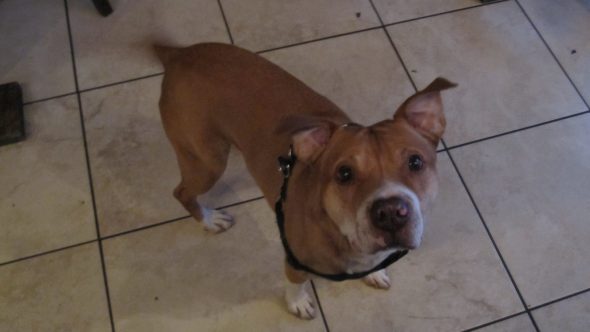
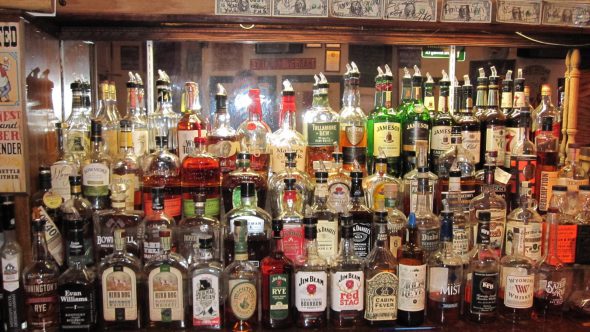
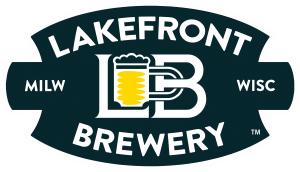
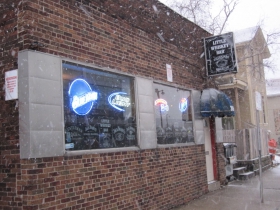
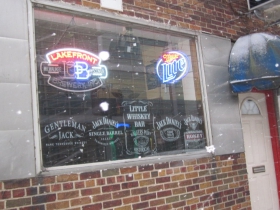
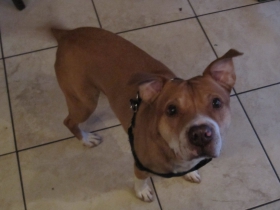
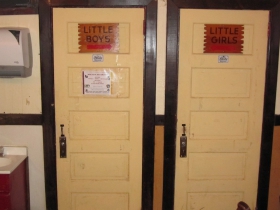
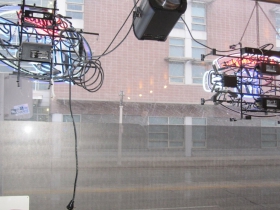
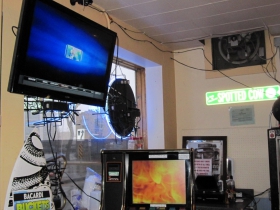




















Found myself in here one afternoon a couple years ago. The bartender and people were friendly enough and my girlfriend actually won some money at the pull-tab machine. She proceeded to “reinvest” and lose it all, but we still enjoyed ourselves.
I’ve never been there, and it sounds like an interesting place (where I won’t be exiled to the boarding room bathrooms in this day and age). Thanks for the great review, as always, Michael Horne!
Thank you for the nice article im Luis Garcia the owner feel free to call me of you have any questions 414 795 0513